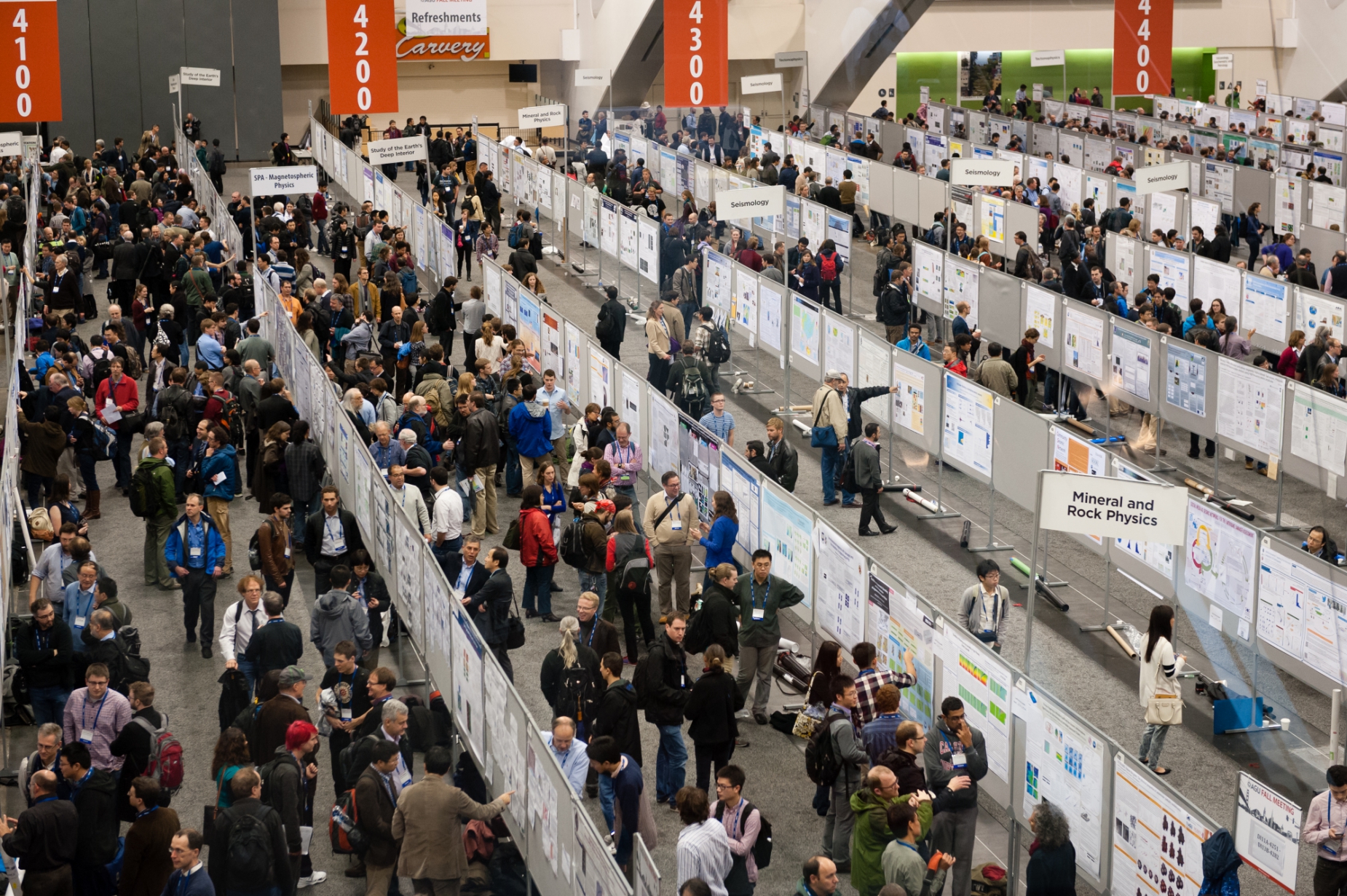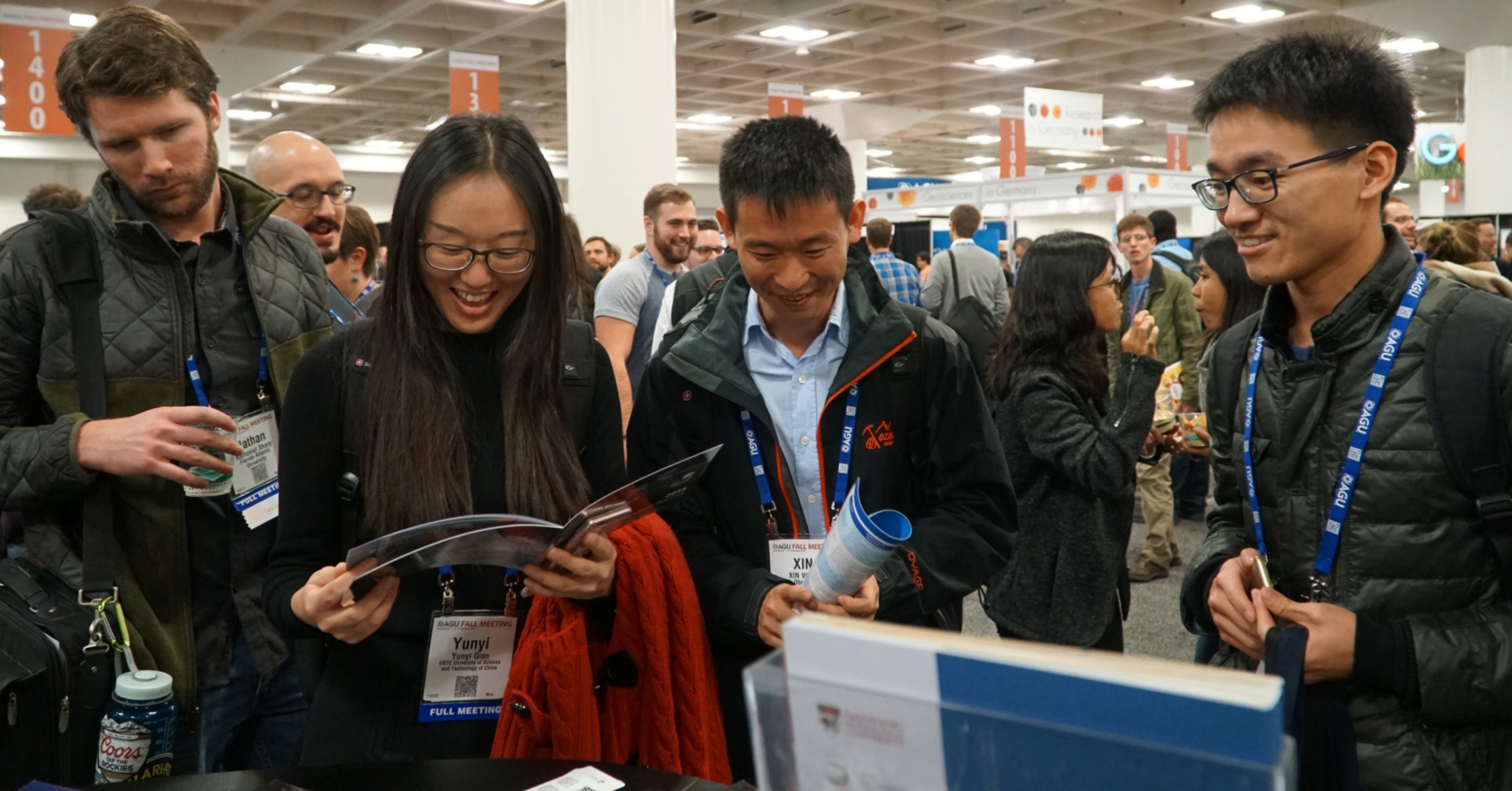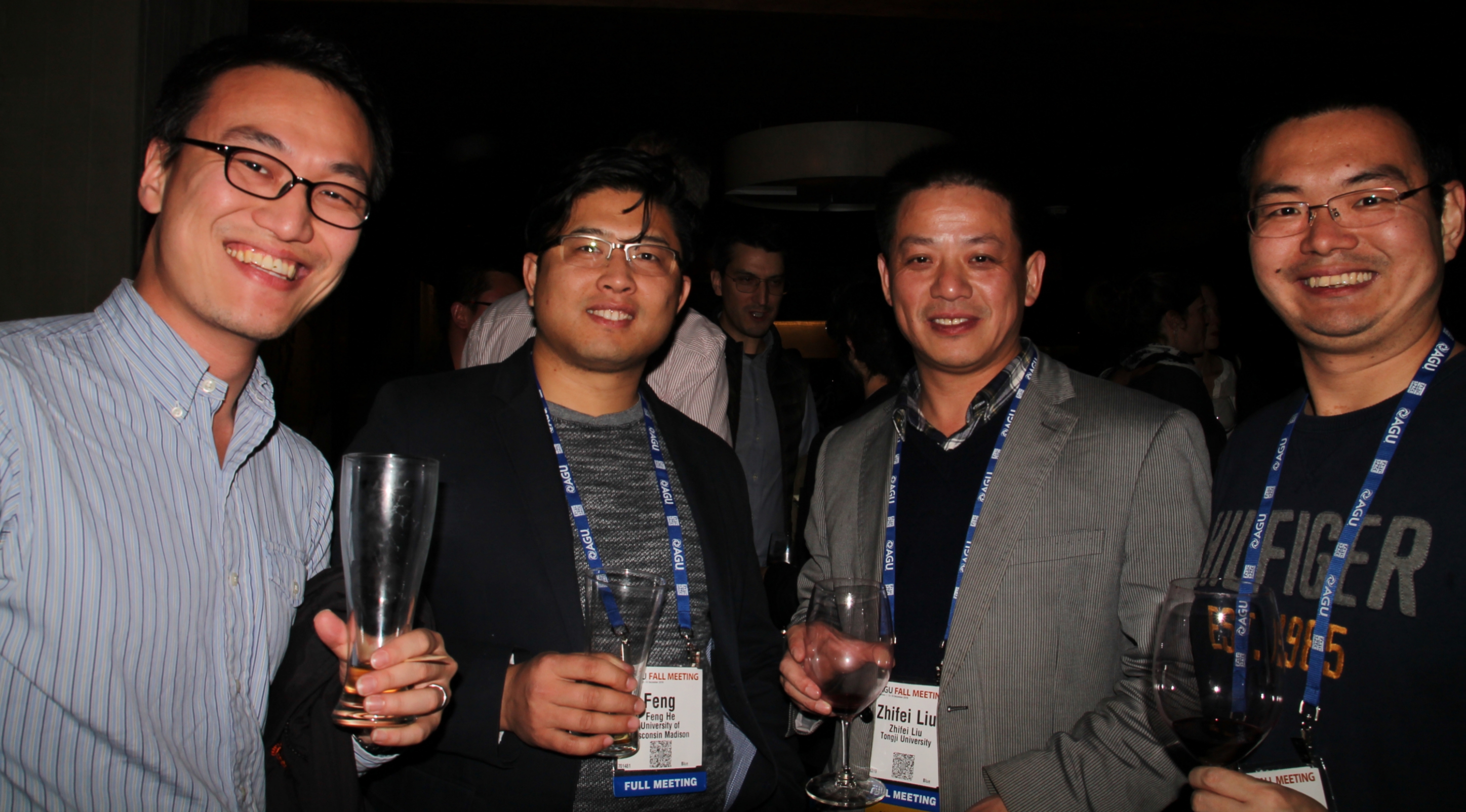
Last December, a big contingent from the Earth Observatory of Singapore (EOS) travelled to the American Geophysical Union (AGU) conference, the largest gathering of earth and space scientists in the world. Around 24,000 people descended upon San Francisco to catch up with colleagues, present their research, and learn about the latest advancements in their fields.
The Community Engagement Office set up a booth to share our work with conference-goers. EOS professors, research fellows, and graduate students graciously volunteered to speak with curious visitors about their experiences and research in Singapore.

The EOS wine reception kicked off the week. Late into the night, EOS scientists and other leading Earth scientists from across the globe discussed projects over wine, beer, and snacks.

EOS scientists presented 26 posters and gave 20 talks. Research Fellow Dr Chen Weiwen talked to a large room about quickly determining earthquake sources in Southeast Asia. Even though Southeast Asia is one of the most seismically active regions in the world, it lacks the real-time data that other regions have. Dr Chen described a new method that can obtain earthquake magnitude and depth within ten minutes after the rupture.
Research Fellow Dr Li Lin Lin spoke about her work on modelling tsunami hazard in the South China Sea. She explained it was after a conversation with EOS seismologist, Assistant Professor Wei Shengji, that she realised most tsunami models were oversimplified. So she came up with a model that simulates earthquake cycles on the Manila megathrust over a span of 100,000 years to estimate expected wave height and tsunami risk. Her model found a greater range of wave heights with much higher maximum wave heights, especially near Hong Kong.
On Wednesday night, Assistant Professor Emma Hill received the Geodesy Section Award at the 2016 AGU Honors Tribute. The award recognised Asst Prof Hill for her research along the Sunda megathrust, work that has “led to an improved understanding of the tectonics of this region.”
By the end of the week, people started to unwind as they finished their poster sessions and presentations. But Associate Professor Nathalie Goodkin still had work to do. She spoke to a packed room about how she determined a 400-year-old record of the South China Sea’s circulation patterns from the gigantic coral Tho Nhat.
Associate Professor Adam Switzer also spoke on Friday about his new research to find a bacterial signature in tsunami sediments. His inspiration for the project? When his young daughter grabbed a fistful of sand and tried to eat it, Assoc Prof Switzer’s wife warned about putting germs in her mouth.
Before we knew it, it was time to tear down the booth and pack up the posters. It was such a fun-filled, packed week that we’re already looking forward to this year’s conference in New Orleans!
(Source of thumbnail and top photo: American Geophysical Union, Source of exhibition hall photos in the slideshow: Cheryl Han, Source of EOS wine reception photos in the slideshow: Kathryn Free)